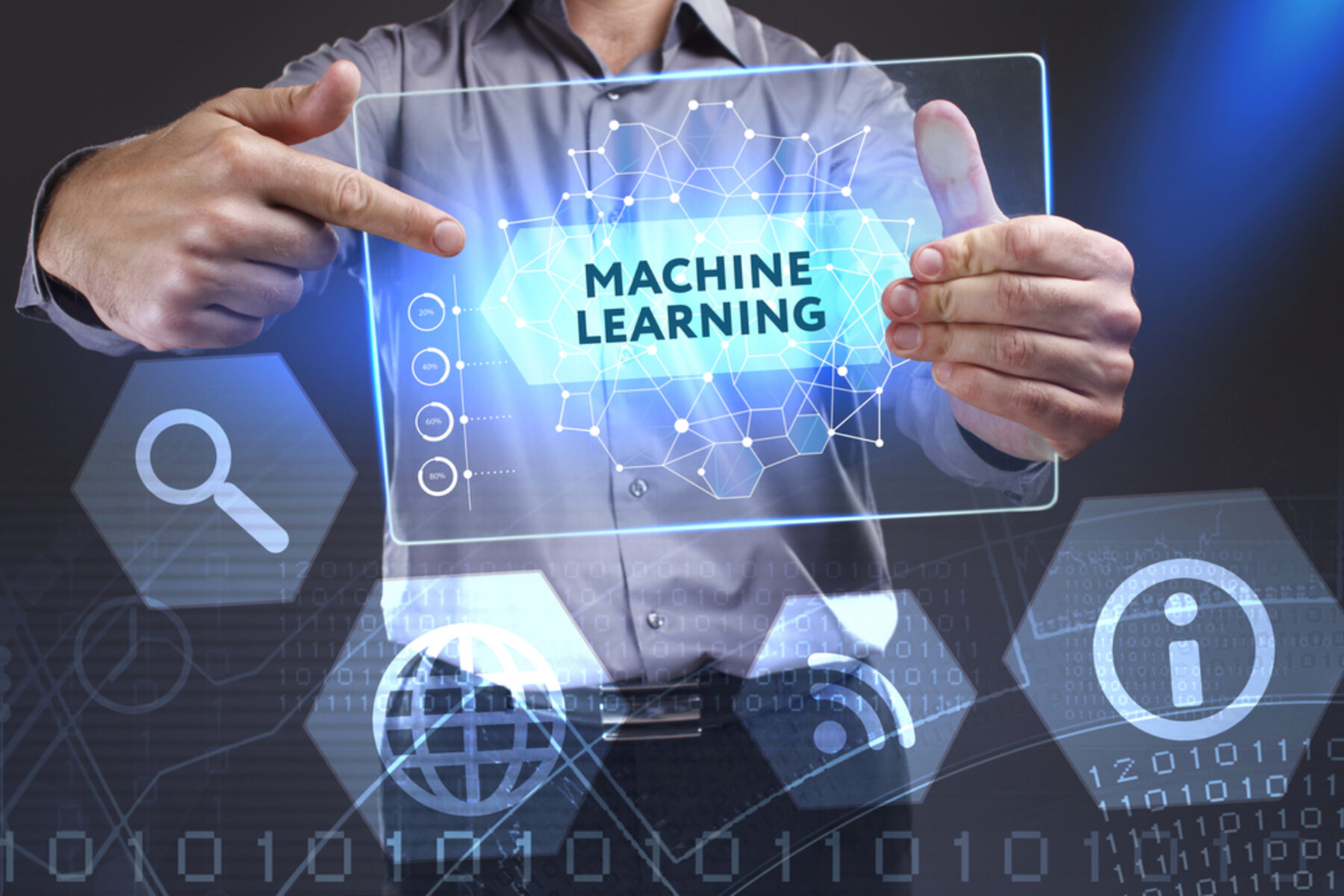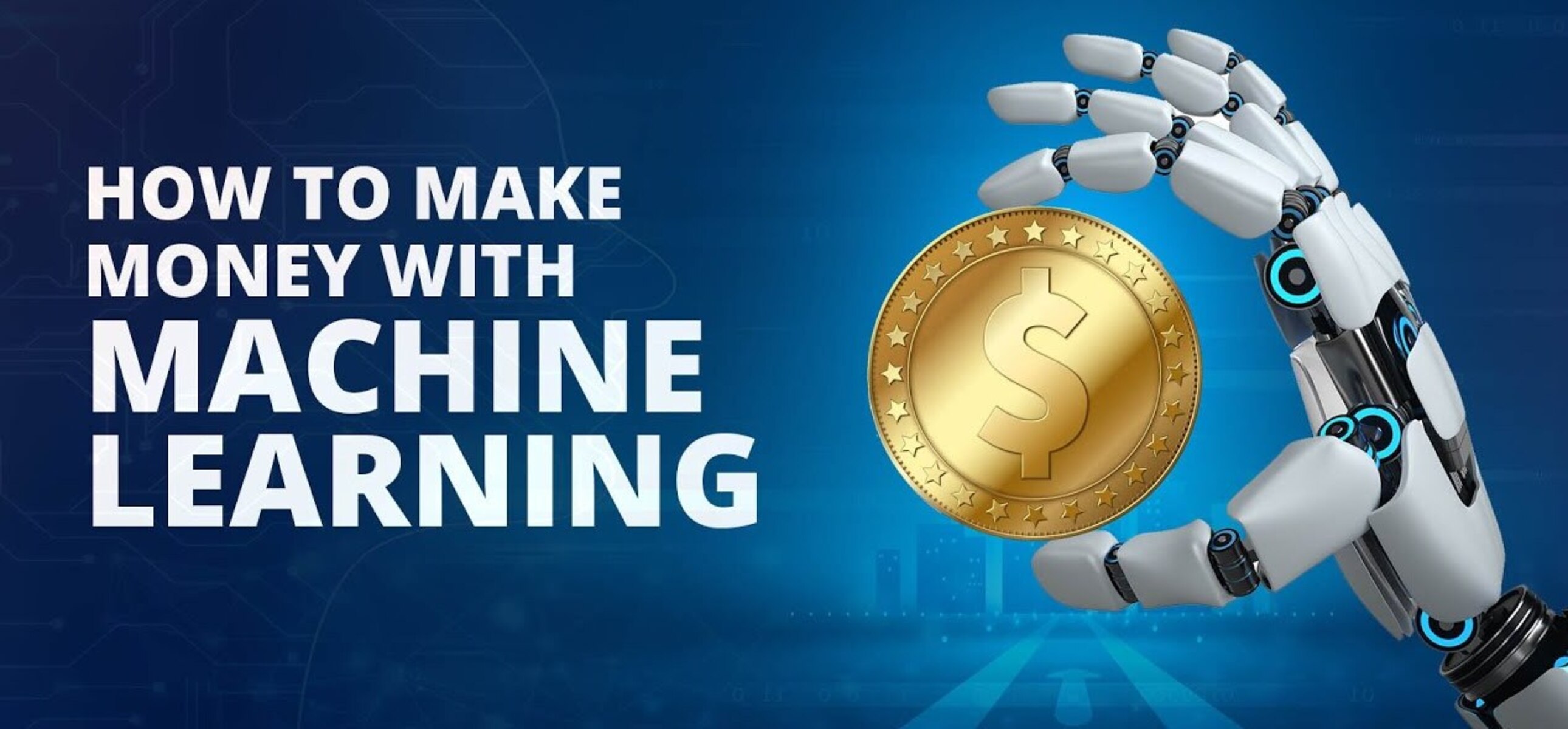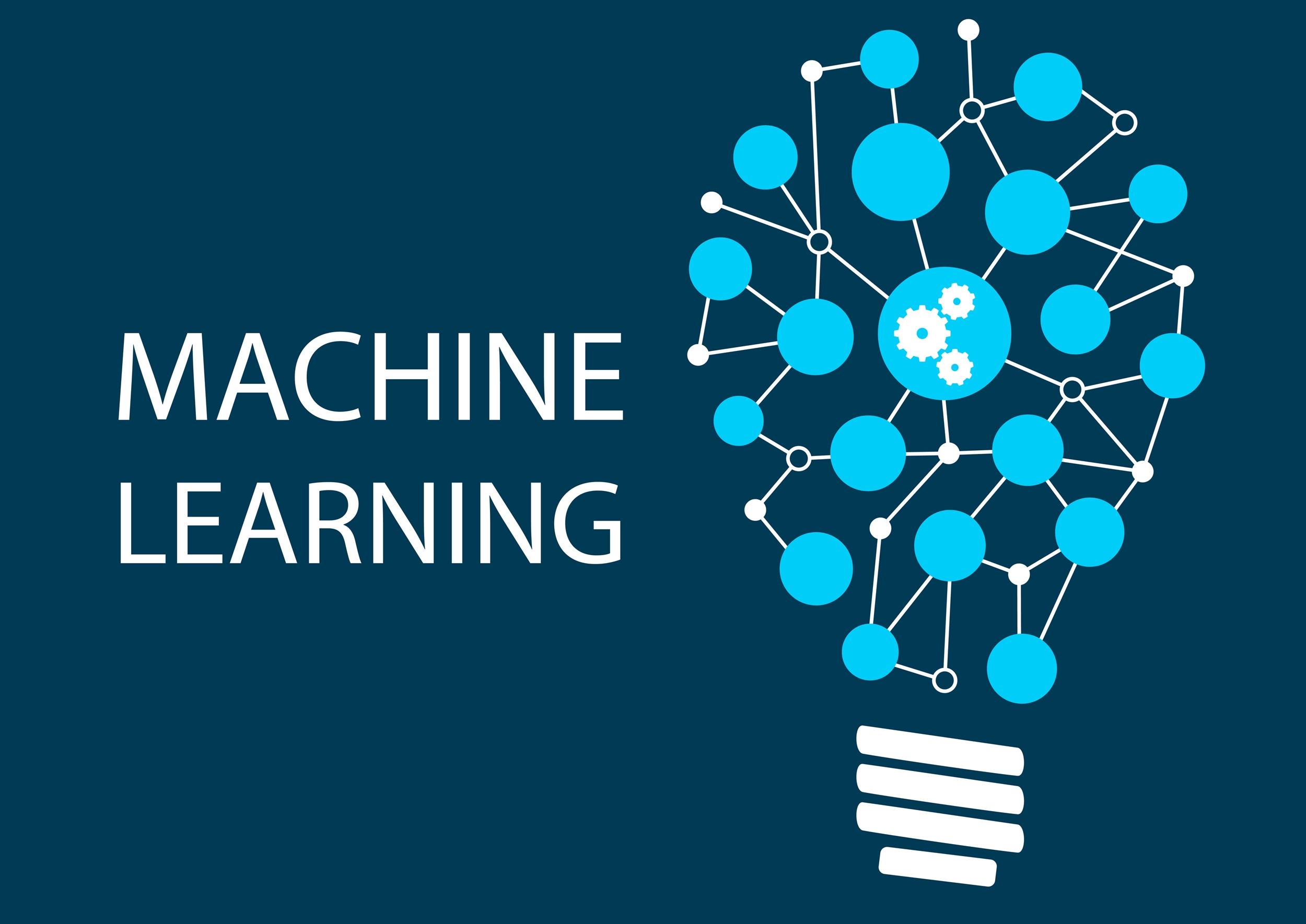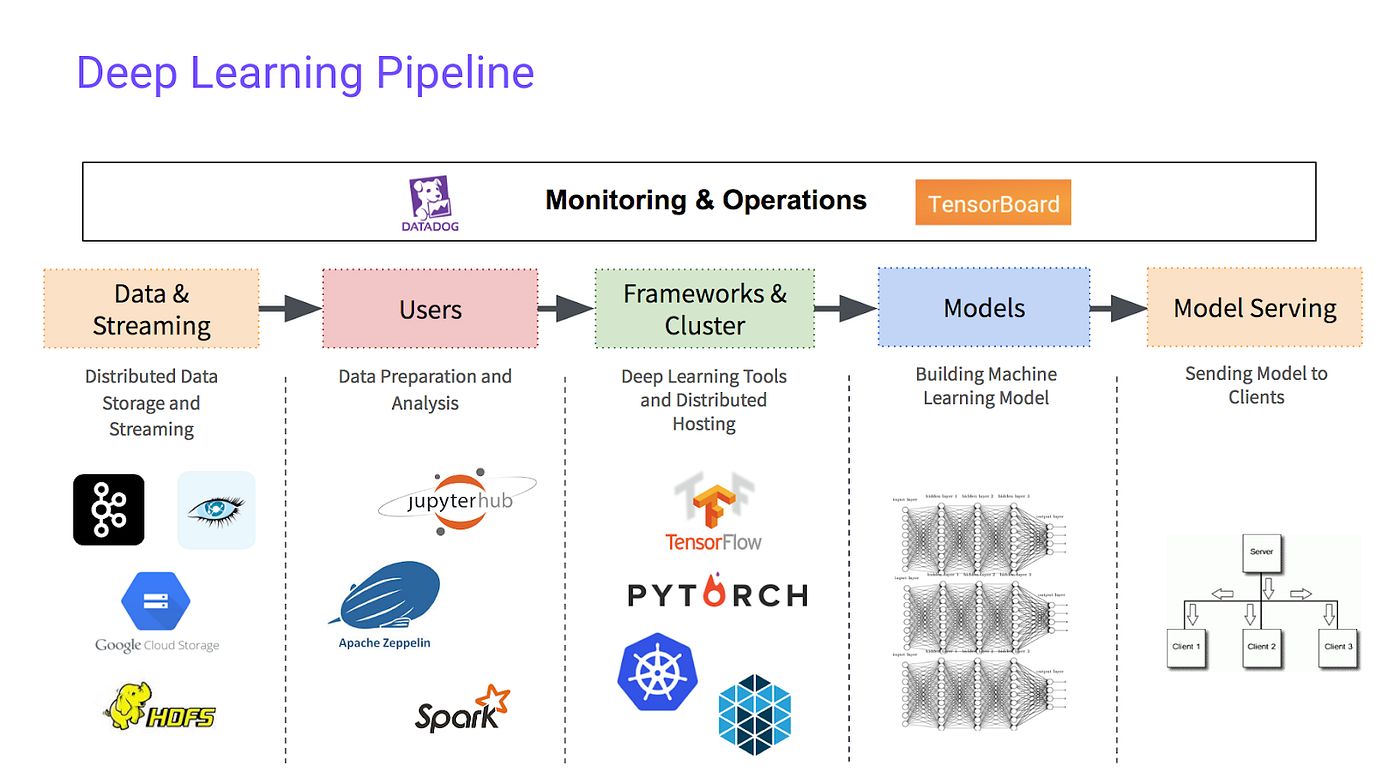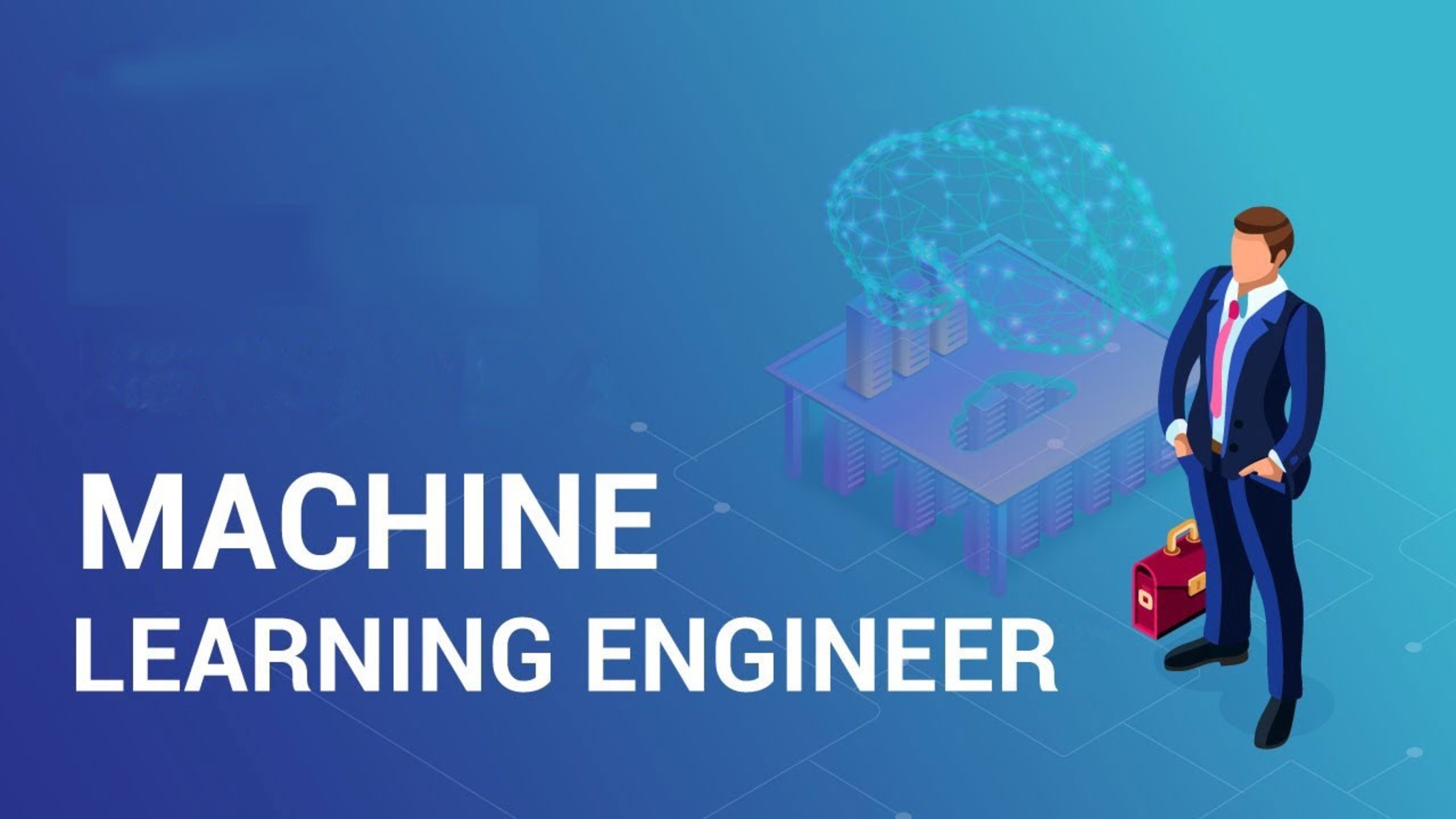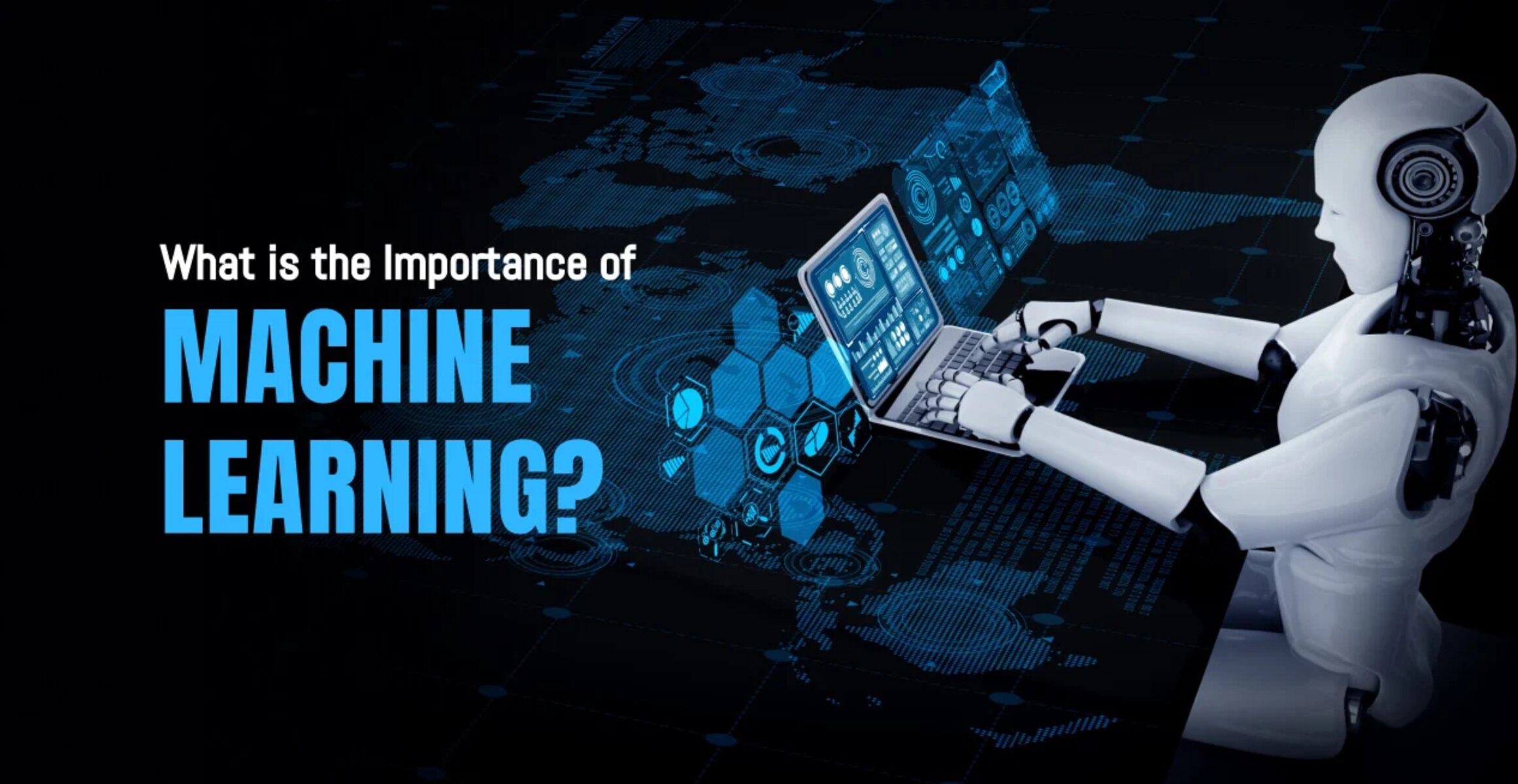Introduction
Welcome to the exciting world of machine learning! In today’s rapidly advancing technological landscape, machine learning has emerged as a powerful and indispensable tool in various fields. From personalized recommendations on streaming platforms to self-driving cars, machine learning has revolutionized the way we interact with technology and opened up a world of possibilities.
Machine learning is a subset of artificial intelligence that focuses on developing algorithms and statistical models that enable computers to learn and make predictions or decisions without being explicitly programmed. It is based on the idea that machines can learn from, analyze, and interpret large volumes of data to identify patterns, make predictions, and uncover insights.
Machine learning has its roots in the field of computer science and has been around for quite some time. However, recent advancements in data collection, processing power, and algorithm development have sparked a resurgence of interest in machine learning, leading to significant breakthroughs and practical applications.
There are several types of machine learning, each with its own distinct characteristics and applications. The most commonly used types include supervised learning, unsupervised learning, semi-supervised learning, reinforcement learning, and deep learning. Each type is suited for different tasks and data types, allowing for a wide range of applications across industries.
Supervised learning involves training a machine learning model using labelled examples, where the desired output is known. The model learns to map inputs to outputs based on the provided examples, enabling it to make predictions on new, unseen data.
Unsupervised learning, on the other hand, deals with unlabelled data, and the model learns to find patterns, clusters, and relationships within the data without any predefined output. This type of learning is useful for tasks such as clustering, anomaly detection, and dimensionality reduction.
Semi-supervised learning is a combination of supervised and unsupervised learning, where the model is trained on a small amount of labelled data and a larger amount of unlabelled data. This approach leverages the advantages of both types and is beneficial when labelled data is limited or expensive to obtain.
Reinforcement learning is a unique approach where an agent interacts with an environment and learns to take actions in order to maximize a reward signal. It involves a trial-and-error process where the agent learns from its experiences and adjusts its actions accordingly to achieve the desired outcome.
Deep learning is a subset of machine learning that focuses on artificial neural networks with multiple layers. These networks are capable of automatically learning hierarchical representations of data, enabling them to handle complex tasks such as image classification, natural language processing, and speech recognition.
In the following sections, we will delve deeper into each type of machine learning, explore the algorithms commonly used, discuss real-world applications, and examine the challenges and limitations associated with this rapidly evolving field. So, let’s dive in and uncover the fascinating world of machine learning!
Definition of Machine Learning
Machine learning is a subfield of artificial intelligence that focuses on the development of algorithms and statistical models that enable computers to learn from and make predictions or decisions based on data, without being explicitly programmed. It involves training a model using data, and the model gradually improves its performance as it learns from more examples.
The key idea behind machine learning is to build computer systems that can automatically learn and improve from experience, without being explicitly programmed for every task. This is achieved through the utilization of mathematical and statistical techniques, which allow machines to recognize patterns and make predictions or decisions based on those patterns.
At the heart of machine learning lies the concept of training data. The model is fed with a large dataset that consists of inputs and corresponding outputs (in the case of supervised learning), or just inputs (in the case of unsupervised learning). The model then learns to identify patterns and relationships within the data, enabling it to make accurate predictions or decisions on new, unseen data.
Machine learning algorithms can be broadly categorized into two main types: supervised learning and unsupervised learning. In supervised learning, the model learns from labeled examples, where each example is associated with a known output or target variable. The model then makes predictions based on new, unseen data by generalizing from the patterns learned during the training phase.
On the other hand, unsupervised learning involves training the model on unlabeled data, where the objective is to uncover hidden patterns, relationships, or structures within the data. Unlike supervised learning, unsupervised learning does not have a predefined output or target variable. Instead, the model aims to discover and represent the underlying distribution or structure of the data.
Machine learning has a wide range of applications across various industries. From recommendation systems in e-commerce and personalized advertisements in digital marketing to fraud detection in finance and disease diagnosis in healthcare, machine learning is transforming the way businesses operate and improving outcomes in numerous domains.
However, it is important to note that machine learning is not a magical solution to all problems. It has its limitations, and the quality and representativeness of the training data play a crucial role in the performance of the model. Additionally, ethical considerations and potential biases in the data should be carefully addressed to ensure fair and unbiased outcomes.
In the following sections, we will explore the different types of machine learning, delve into specific algorithms commonly used, discuss real-world applications of machine learning, and examine the challenges and limitations associated with this rapidly evolving field. So, let’s continue our journey into the fascinating world of machine learning!
History of Machine Learning
The roots of machine learning can be traced back to the early days of computing and the field of artificial intelligence. While the concept of machine learning as it exists today has emerged in recent years, its fundamental ideas and principles have evolved over several decades.
In the mid-20th century, during the emergence of computing, researchers and scientists began exploring the possibility of creating machines that could simulate human intelligence. This led to the development of early machine learning models and algorithms, including the perceptron, which was introduced by psychologist Frank Rosenblatt in the late 1950s. The perceptron was capable of learning simple patterns and making basic decisions based on input data.
However, the progress of machine learning slowed down in the following years, primarily due to limitations in computing power and the lack of extensive datasets required for training models. It wasn’t until the 1980s that there was a resurgence of interest in machine learning, thanks to advancements in computer hardware and algorithms.
During this period, researchers focused on developing more sophisticated machine learning techniques, such as decision trees, support vector machines, and neural networks. These developments paved the way for practical applications of machine learning in fields such as pattern recognition, speech and handwriting recognition, and data mining.
As the internet and digital technologies became more pervasive in the late 1990s and early 2000s, machine learning started to gain even more traction. The availability of large amounts of data and computational resources allowed for the training of more complex models and the exploration of new algorithms.
In 2006, the emergence of deep learning marked a significant milestone in the history of machine learning. Deep learning algorithms, based on artificial neural networks with multiple layers, demonstrated remarkable capabilities in tasks such as image and speech recognition. This breakthrough sparked a renewed interest in machine learning and paved the way for numerous applications in computer vision, natural language processing, and other domains.
Today, machine learning is a rapidly evolving field that has found its place in various industries and everyday applications. From virtual assistants and recommendation systems to fraud detection and autonomous vehicles, machine learning is revolutionizing the way we live and work.
Looking ahead, the future of machine learning holds even more exciting possibilities. As advancements continue to be made in areas such as deep learning, reinforcement learning, and explainable artificial intelligence, machine learning is expected to drive further innovation and transform industries across the board.
In the following sections, we will explore the different types of machine learning, delve into specific algorithms commonly used, discuss real-world applications, and examine the challenges and limitations associated with this fascinating field. So, let’s embark on this journey into the realm of machine learning!
Types of Machine Learning
Machine learning can be classified into several distinct types, each with its own unique characteristics and applications. By understanding the different types of machine learning, we can better grasp how algorithms learn from data and make predictions or decisions. The main types of machine learning are supervised learning, unsupervised learning, semi-supervised learning, reinforcement learning, and deep learning.
1. Supervised Learning: Supervised learning is one of the most widely used types of machine learning. It involves training a model using a labeled dataset, where each example has a corresponding output or target variable. The model learns to map inputs to outputs based on the provided examples. Supervised learning is useful for tasks such as classification, regression, and time series forecasting.
2. Unsupervised Learning: Unsupervised learning deals with unlabelled data, where there are no predefined output or target variables. The goal of unsupervised learning is to uncover patterns, clusters, or relationships within the data. It is often used for tasks such as clustering, anomaly detection, and dimensionality reduction.
3. Semi-Supervised Learning: Semi-supervised learning combines elements of supervised and unsupervised learning. In this approach, the model is trained on a small amount of labeled data and a larger amount of unlabeled data. It leverages the advantages of both supervised and unsupervised learning, making it useful when labeled data is limited or expensive to obtain.
4. Reinforcement Learning: Reinforcement learning involves an agent interacting with an environment and learning to take actions in order to maximize a reward signal. The agent learns through a trial-and-error process, where it receives feedback in the form of rewards or penalties based on its actions. Reinforcement learning is commonly used in scenarios such as game playing, robotics, and optimization problems.
5. Deep Learning: Deep learning is a subset of machine learning that focuses on artificial neural networks with multiple layers. These deep neural networks are capable of automatically learning hierarchical representations of data, enabling them to handle complex tasks such as image recognition, natural language processing, and speech synthesis. Deep learning has achieved impressive results in various domains and has gained significant attention in recent years.
Each type of machine learning has its own advantages, limitations, and suitability for different tasks. The choice of which type to use depends on the nature of the problem, the availability of labeled data, and the desired outcome.
In the following sections, we will explore each type of machine learning in more detail, examine the algorithms commonly used, discuss real-world applications, and delve into the challenges and limitations faced by machine learning algorithms. So, let’s continue our exploration of the fascinating world of machine learning!
Supervised Learning
Supervised learning is a type of machine learning that involves training a model using a labeled dataset, where each example has a corresponding output or target variable. The goal of supervised learning is for the model to learn the relationship or mapping between inputs and outputs, allowing it to make accurate predictions on new, unseen data.
In supervised learning, the labeled dataset serves as the training data, which is used to teach the model how to make predictions. The model learns from the input-output pairs by identifying patterns and generalizing from the provided examples.
There are two main categories of supervised learning: classification and regression.
Classification: Classification is a supervised learning task where the model learns to classify input data into predefined classes or categories. This type of learning is used when the target variable is categorical or qualitative. The goal is for the model to create decision boundaries or rules that can accurately classify new instances into the correct class. Common examples of classification tasks include email spam detection, sentiment analysis, and image categorization.
Regression: Regression, on the other hand, is a supervised learning task where the model learns to predict a continuous or numerical output. The target variable in regression is quantitative, and the goal is for the model to estimate a value based on the input features. Regression is commonly used for tasks such as stock price prediction, sales forecasting, and housing price estimation.
Supervised learning algorithms are designed to find the best possible mapping or relationship between the input and output variables, given the training data. The performance of the model is evaluated using metrics such as accuracy, precision, recall, or mean squared error, depending on the specific task.
Popular algorithms used in supervised learning include linear regression, logistic regression, support vector machines (SVM), decision trees, random forests, and neural networks. Each algorithm has its own characteristics, strengths, and weaknesses, making it suitable for different types of data and tasks.
Supervised learning has become an invaluable tool in various domains and applications. It is used in fields such as finance for credit scoring, in healthcare for disease diagnosis, in customer relationship management for churn prediction, and in autonomous vehicles for image recognition and object detection.
One of the challenges in supervised learning is the availability and quality of labeled data. Creating a labeled dataset can be time-consuming and costly, especially when dealing with large amounts of data. Additionally, bias in the training data can impact the performance and fairness of the model, highlighting the importance of data quality and diversity.
In the following sections, we will explore other types of machine learning, further discuss algorithms commonly used in supervised learning, examine real-world applications, and delve into the challenges and limitations faced by machine learning algorithms. So, let’s continue our journey into the fascinating world of machine learning!
Unsupervised Learning
Unsupervised learning is a type of machine learning where the model is trained on unlabelled data, meaning there are no predefined output or target variables. This type of learning focuses on discovering patterns, relationships, or structures within the data without any prior knowledge.
In unsupervised learning, the model explores the dataset and learns to extract meaningful insights and representations. It aims to uncover hidden patterns that may not be immediately apparent to human observers. Unsupervised learning is particularly valuable when working with large and complex datasets where manual labeling is impractical or unavailable.
There are several common tasks in unsupervised learning:
1. Clustering: Clustering is a task where the model groups similar instances together based on their intrinsic characteristics. The goal is to identify natural groupings or clusters within the data. Clustering algorithms assign data points to these clusters based on their proximity or similarity, enabling the model to discover structures and relationships within the dataset. Clustering is widely used in customer segmentation, image segmentation, and anomaly detection.
2. Anomaly Detection: Anomaly detection, also known as outlier detection, involves identifying instances that deviate significantly from the norm or expected behavior within the dataset. Unsupervised learning algorithms can learn patterns from the majority of the data and detect deviations or anomalies that are not typical. Anomaly detection is crucial for fraud detection, network intrusion detection, and manufacturing quality control.
3. Dimensionality Reduction: Dimensionality reduction is the process of reducing the number of features or variables in a dataset while preserving its essential information. This is achieved by transforming the data into a lower-dimensional space, where the most relevant and informative features are retained. Dimensionality reduction techniques, such as principal component analysis (PCA) and t-distributed stochastic neighbor embedding (t-SNE), are commonly used for visualization, feature selection, and data compression.
Unsupervised learning algorithms autonomously discover hidden patterns or structures in the data, without the need for explicit guidance or training labels. These algorithms, such as k-means clustering, hierarchical clustering, and self-organizing maps, enable machines to mine vast amounts of data for insights and discover valuable information that may be overlooked through manual analysis.
However, unsupervised learning poses its own challenges. The absence of labels makes it difficult to objectively evaluate the performance of unsupervised models. Additionally, the selection of appropriate algorithms and parameter settings can heavily influence the quality of the discovered patterns or structures.
Unsupervised learning finds applications in various fields. It is employed in market research to segment customers based on purchasing behavior, in recommendation systems to group similar items, and in genomics to identify genetic patterns. It is also used in natural language processing for topic modeling and sentiment analysis.
In the following sections, we will explore other types of machine learning, discuss algorithms commonly used in unsupervised learning, examine real-world applications, and delve into the challenges and limitations faced by machine learning algorithms. So, let’s continue our exploration of the fascinating world of machine learning!
Semi-Supervised Learning
Semi-supervised learning is a type of machine learning that combines elements of both supervised and unsupervised learning. In this approach, the model is trained on a combination of labeled and unlabeled data, leveraging the strengths of both types of learning.
Unlike supervised learning, where a fully labeled dataset is required, semi-supervised learning allows for the use of a smaller labeled dataset and a larger unlabeled dataset. This is particularly useful when obtaining labeled data is expensive, time-consuming, or impractical.
The unlabeled data provides additional information to the model, helping it learn more about the underlying structure or patterns within the data. By learning from both labeled and unlabeled examples, the model can generalize better and make more accurate predictions on unseen data.
The process of semi-supervised learning typically involves two steps:
1. Supervised Training: In the first step, the model is trained on the small labeled dataset using standard supervised learning techniques. This allows the model to learn the initial mapping between inputs and outputs, using the provided labeled examples.
2. Unsupervised Learning: In the second step, the model uses the additional unlabeled data to improve its understanding of the underlying structure. This might involve techniques such as clustering, dimensionality reduction, or self-training, where the initial model is used to make predictions on the unlabeled data, and these predictions are then incorporated into the training process.
Semi-supervised learning has several advantages:
– It leverages the advantages of both supervised and unsupervised learning, combining the labeled data’s precision and the unlabeled data’s broader representation of the underlying data distribution.
– It can improve models’ performance, especially when labeled data is scarce or costly to obtain.
– It can lead to better generalization on unseen data, as the model learns from a larger and more diverse dataset.
– It enables the use of unlabeled data, which is often more abundant and easier to acquire compared to labeled data.
Semi-supervised learning algorithms vary depending on the specific task and the learning framework being used. Some common techniques include self-training, co-training, and generative models such as Gaussian Mixture Models (GMM) and Deep Generative Models.
Semi-supervised learning finds applications in various fields. It has been used for image classification, natural language processing, speech recognition, and many other tasks where labeled data is limited, but unlabeled data is abundant.
However, semi-supervised learning is not without its challenges. The quality and representativeness of the labeled data can heavily influence the model’s performance, and the selection of appropriate learning algorithms and techniques is crucial. Additionally, the unlabeled data should come from the same distribution as the labeled data to ensure the model’s generalization ability.
In the following sections, we will explore other types of machine learning, discuss algorithms commonly used in semi-supervised learning, examine real-world applications, and delve into the challenges and limitations faced by machine learning algorithms. So, let’s continue our exploration of the fascinating world of machine learning!
Reinforcement Learning
Reinforcement learning is a type of machine learning that focuses on training an agent to take actions in an environment to maximize a reward signal. It involves a trial-and-error learning process, where the agent interacts with the environment, learns from its experiences, and adjusts its actions to achieve a desired outcome.
In reinforcement learning, the agent aims to learn a policy, which is a mapping between states and actions, that maximizes the cumulative reward it receives over time. The agent explores different actions, receives feedback in the form of rewards or penalties, and learns to optimize its decision-making strategy to maximize the long-term reward.
The key components of reinforcement learning include:
1. Agent: The agent is the entity that takes actions in the environment. It receives feedback from the environment in the form of rewards or penalties based on its actions.
2. Environment: The environment represents the external system or world in which the agent operates. It provides feedback to the agent based on its actions.
3. State: The state represents the current configuration or situation of the agent within the environment. It provides information about the agent’s current position or condition.
4. Action: The action is the decision or choice made by the agent in a given state. It determines how the agent interacts with the environment.
5. Reward: The reward is the feedback provided to the agent after it takes an action in a certain state. It indicates the desirability or quality of the action taken.
The goal of reinforcement learning is to find an optimal policy that maximizes the long-term cumulative reward. This is achieved through the use of various learning techniques, such as value iteration, Q-learning, and policy gradients.
Reinforcement learning has been successfully applied to various domains, including game playing, robotics, recommendation systems, and autonomous vehicles. For example, in game playing, reinforcement learning algorithms have achieved superhuman performance in complex games such as Go and chess.
However, reinforcement learning can be challenging due to the exploration-exploitation trade-off. The agent needs to explore different actions and learn from the feedback it receives, but it also needs to balance this exploration with exploiting the learned knowledge to optimize its performance.
Another challenge is the issue of delayed rewards. In some scenarios, the reward signal may not be immediate, but instead, it may be received after a series of actions. The agent needs to learn to associate its actions with the delayed rewards to make effective decisions.
In the following sections, we will explore other types of machine learning, discuss algorithms commonly used in reinforcement learning, examine real-world applications, and delve into the challenges and limitations faced by machine learning algorithms. So, let’s continue our exploration of the fascinating world of machine learning!
Deep Learning
Deep learning is a subset of machine learning that focuses on artificial neural networks with multiple layers, also known as deep neural networks. These networks are inspired by the structure and function of the human brain, enabling them to learn hierarchical representations of data and solve complex problems.
Deep learning has gained significant attention and popularity in recent years due to its remarkable capabilities in various domains, ranging from image recognition and natural language processing to speech synthesis and autonomous driving.
The key components of deep learning include:
1. Artificial Neural Networks: Deep learning heavily relies on artificial neural networks, which are composed of interconnected layers of artificial neurons, or nodes. These networks can learn and represent complex patterns and relationships within the data.
2. Multiple Layers: Deep neural networks consist of multiple layers, including an input layer, one or more hidden layers, and an output layer. Each layer processes the inputs from the previous layer and passes the transformed information to the next layer.
3. Activation Functions: Activation functions are applied to the outputs of each node in a neural network layer to introduce non-linearity and enhance the model’s ability to learn complex patterns. Popular activation functions include the rectified linear unit (ReLU), sigmoid, and hyperbolic tangent (tanh).
4. Training and Optimization: Deep learning models are trained using large labeled datasets through a process called backpropagation. This involves iteratively adjusting the weights and biases of the networks to minimize the difference between the predicted output and the ground truth.
5. Deep Learning Architectures: Several deep learning architectures have been developed to address specific tasks and data types. Convolutional neural networks (CNNs) are widely used for image and video analysis, recurrent neural networks (RNNs) are effective for sequence data processing, and generative adversarial networks (GANs) are used for generating new data samples.
Deep learning has revolutionized many domains through its ability to automatically learn hierarchical representations of data. For instance, in computer vision, deep learning algorithms have achieved groundbreaking performance in tasks such as image classification, object detection, and image segmentation.
In natural language processing, deep learning models have made significant strides in tasks such as machine translation, sentiment analysis, and language generation. They have also propelled advancements in speech recognition, where deep learning networks have excelled and enabled voice-controlled assistants and transcription services.
However, deep learning comes with its own challenges. It requires a significant amount of labeled data for training, and training deep networks can be computationally intensive and time-consuming. Overfitting, where the model performs well on training data but poorly on unseen data, is another challenge that needs to be addressed.
In the following sections, we will explore other types of machine learning, discuss algorithms commonly used in deep learning, examine real-world applications, and delve into the challenges and limitations faced by machine learning algorithms. So, let’s continue our exploration of the fascinating world of machine learning!
Machine Learning Algorithms
Machine learning algorithms are at the core of the learning process in machine learning. These algorithms employ various techniques and mathematical models to analyze data, learn patterns, and make predictions or decisions. The choice of algorithm depends on the type of task, the nature of the data, and the desired outcome. In this section, we will explore some popular machine learning algorithms across different types of learning.
1. Linear Regression: Linear regression is a supervised learning algorithm used for regression tasks. It models the relationship between independent variables and a continuous dependent variable, aiming to find the best-fit line that minimizes the difference between the predicted and actual values. It is a simple yet powerful algorithm used for tasks such as sales forecasting and trend analysis.
2. Logistic Regression: Logistic regression is another widely used supervised learning algorithm, primarily used for classification tasks. It models the relationship between independent variables and a binary or categorical dependent variable. It estimates the probability of an instance belonging to a specific class using a logistic function. Logistic regression finds applications in sentiment analysis, credit scoring, and disease diagnosis.
3. Decision Trees: Decision trees are versatile supervised learning algorithms that can be used for both classification and regression tasks. They partition the data into hierarchical, tree-like structures based on different attribute values. Each internal node corresponds to a condition, and each leaf node represents a class or a value. Decision trees are popular due to their interpretability and are commonly used in financial analysis, customer segmentation, and fraud detection.
4. Support Vector Machines (SVM): SVM is a supervised learning algorithm that aims to find the best hyperplane that separates data points of different classes with the maximum margin. SVM can handle both linearly separable and non-linearly separable data by utilizing the kernel trick. It is widely used for tasks such as image classification, text categorization, and bioinformatics.
5. K-Nearest Neighbors (KNN): KNN is a versatile supervised learning algorithm used for both classification and regression tasks. KNN assigns a new data point to the class or value of its nearest neighbors based on a distance metric. It does not explicitly learn a model but rather stores the training data and calculates distances during prediction. KNN is commonly used in recommendation systems, anomaly detection, and pattern recognition.
6. K-Means Clustering: K-Means is an unsupervised learning algorithm used for clustering tasks. It partitions the data into K clusters by iteratively assigning data points to the cluster with the nearest centroid and updating the centroids. K-Means clustering has applications in customer segmentation, image segmentation, and document clustering.
7. Neural Networks: Neural networks, especially deep neural networks, have gained significant attention in recent years due to their remarkable capabilities in various domains. These models are composed of interconnected layers of artificial neurons that learn hierarchical representations of data. Neural networks find applications in computer vision, natural language processing, speech recognition, and many other areas.
These are just a few examples of the many machine learning algorithms available. Each algorithm comes with its own strengths, weaknesses, and assumptions. The choice of the algorithm depends on factors such as the complexity of the problem, the size and quality of the dataset, and computational resources.
In the following sections, we will explore real-world applications of machine learning, discuss the challenges and limitations faced by machine learning algorithms, and continue our exploration of the fascinating world of machine learning!
Common Applications of Machine Learning
Machine learning has transcended various domains and is being applied in numerous real-world applications. The ability of machine learning algorithms to learn from data, identify patterns, and make predictions or decisions has transformed industries and improved processes in remarkable ways. In this section, we will explore some common and impactful applications of machine learning.
1. Recommendation Systems: Recommendation systems are widely used in e-commerce, streaming platforms, and online content platforms. Machine learning algorithms analyze user behavior, preferences, and historical data to provide personalized recommendations. These systems help users discover relevant products, movies, music, and articles, enhancing the user experience and increasing engagement.
2. Predictive Analytics: Predictive analytics leverages historical and real-time data to make predictions about future outcomes. Machine learning algorithms analyze patterns, trends, and relationships within the data to forecast events or behavior. This is valuable in fields such as finance, sales forecasting, demand planning, and risk management.
3. Image and Speech Recognition: Image and speech recognition have made significant advancements with the help of machine learning. Deep learning algorithms, such as convolutional neural networks (CNNs), are capable of accurately identifying and categorizing objects in images and transcribing speech into text. Applications range from facial recognition and autonomous vehicles to voice-controlled virtual assistants.
4. Natural Language Processing (NLP): NLP enables machines to understand, interpret, and generate human language. Machine learning algorithms are used for tasks such as sentiment analysis, text classification, information extraction, and machine translation. NLP finds applications in chatbots, virtual assistants, information retrieval, and content analysis.
5. Fraud Detection: Machine learning algorithms are effective in detecting fraudulent activities in various domains, including finance, insurance, and e-commerce. These algorithms analyze patterns and anomalies in data, flagging suspicious transactions or activities that deviate from the norm. Fraud detection systems help prevent financial losses and protect users from malicious activities.
6. Healthcare: In healthcare, machine learning algorithms are used for disease diagnosis, medical imaging analysis, drug discovery, and personalized medicine. These algorithms analyze patient data, medical records, and biological information to assist in diagnosis, predict disease outcomes, and guide treatment decisions. Machine learning has the potential to significantly enhance healthcare outcomes and reduce costs.
7. Smart Manufacturing: Machine learning techniques are employed in manufacturing to optimize processes, improve quality control, and enable predictive maintenance. Algorithms analyze sensor data, production metrics, and historical data to identify patterns and anomalies, allowing for proactive maintenance, reduced downtime, and improved efficiency.
These are just a few examples of the countless applications of machine learning in diverse industries. Machine learning continues to advance and revolutionize various domains, empowering decision-making, automation, and efficiency. As data collection and computational capabilities expand, the potential for applying machine learning algorithms will continue to grow.
In the following sections, we will discuss the challenges and limitations faced by machine learning algorithms, and deepen our exploration of the fascinating world of machine learning!
Challenges and Limitations of Machine Learning
While machine learning has shown tremendous potential and wide-ranging applications, it also faces several challenges and limitations that researchers and practitioners constantly work towards addressing. Understanding and addressing these challenges is crucial for maximizing the effectiveness and reliability of machine learning algorithms. In this section, we will explore some of the key challenges and limitations of machine learning.
1. Data Quality and Quantity: Machine learning algorithms heavily rely on high-quality, diverse, and representative data for training. The availability of large labeled datasets can be limited, and the quality of the data can impact the performance and generalization ability of the model. Biases, errors, and data incompleteness can introduce biases into the model and result in inaccurate predictions or decisions.
2. Overfitting and Underfitting: Overfitting occurs when a model performs well on the training data but fails to generalize to unseen data. Overly complex models can memorize noise in the training data instead of learning meaningful patterns, leading to poor performance on new instances. Underfitting, on the other hand, occurs when a model is too simple and fails to capture the underlying relationships in the data. Balancing model complexity and generalization is a key challenge in machine learning.
3. Interpretability and Explainability: Many machine learning algorithms, especially deep neural networks, are often treated as black boxes, making it challenging to interpret and understand the reasoning behind their predictions or decisions. This lack of interpretability can raise ethical concerns and hinder the adoption of machine learning solutions in domains where transparency and explainability are critical.
4. Performance Metrics and Evaluation: Choosing appropriate performance metrics and evaluating the effectiveness of machine learning algorithms is a complex task. Different domains and tasks require different metrics, and the choice of metric can significantly impact the perceived performance of the model. Evaluating models based solely on accuracy may not be sufficient, and other factors such as precision, recall, or false positives/negatives need to be considered.
5. Bias and Fairness: Machine learning algorithms can inadvertently inherit biases present in the training data, resulting in biased predictions or decisions. Biases related to factors such as gender, ethnicity, or socio-economic status can lead to discriminatory outcomes. Ensuring fairness and mitigating bias in machine learning algorithms remains a significant challenge and area of active research.
6. Scalability and Computation: Training and deploying machine learning models can be computationally intensive, especially for deep learning algorithms that require significant computational resources. The scalability of algorithms and their ability to handle large datasets and real-time processing is an ongoing challenge.
7. Ethical Considerations: Machine learning raises important ethical considerations, such as privacy, security, and algorithmic accountability. Ensuring that machine learning algorithms are designed and deployed ethically, and that their impact on society is carefully considered remains a challenge as technology advances.
Addressing these challenges and limitations requires ongoing research, collaboration, and a multi-disciplinary approach. Developing robust algorithms, improving data collection and preprocessing techniques, and fostering transparency and interpretability are essential steps towards realizing the full potential of machine learning in a responsible and ethical manner.
In the following sections, we will continue our exploration of the fascinating world of machine learning and dive deeper into specific algorithms, applications, and advancements in this rapidly evolving field.
Conclusion
Machine learning has transformed the way we interact with technology and has found applications in diverse fields, ranging from healthcare to finance, and from recommendation systems to image recognition. The ability of machine learning algorithms to learn from data and make predictions or decisions has revolutionized industries, enhanced efficiency, and improved outcomes.
Throughout this journey into the world of machine learning, we have explored different types of machine learning, such as supervised learning, unsupervised learning, semi-supervised learning, reinforcement learning, and deep learning. Each type offers unique capabilities and is suited to different tasks and data types. We have examined popular algorithms within each type, including linear regression, decision trees, support vector machines, and neural networks.
Real-world applications of machine learning have demonstrated the transformative impact of these algorithms. Recommendation systems guide our choices, predictive analytics improve decision-making, image recognition powers facial recognition and autonomous vehicles, and healthcare benefits from disease diagnosis and personalized medicine.
However, machine learning algorithms also face challenges and limitations. Issues such as data quality, overfitting, interpretability, bias, scalability, and ethical considerations require ongoing research and careful attention. These challenges highlight the importance of responsible development and deployment of machine learning algorithms.
As technology advances, the potential for machine learning continues to grow. Researchers and practitioners continuously strive to improve algorithms, data collection and preprocessing techniques, and the ethical and transparent use of machine learning. The future of machine learning holds exciting possibilities, with advancements in deep learning, reinforcement learning, and explainable artificial intelligence on the horizon.
Machine learning has the power to shape our world, fueling innovation, driving automation, and enabling intelligent decision-making. It is an ever-evolving field with limitless potential to transform industries, enhance our lives, and tackle real-world challenges.
Let us continue to explore, learn, and harness the potential of this fascinating world of machine learning.







